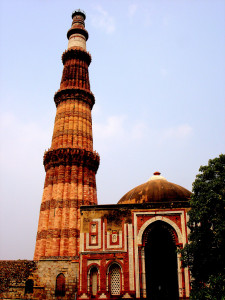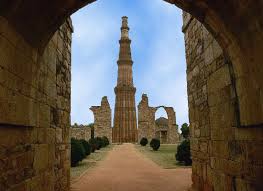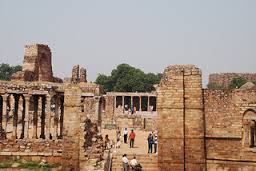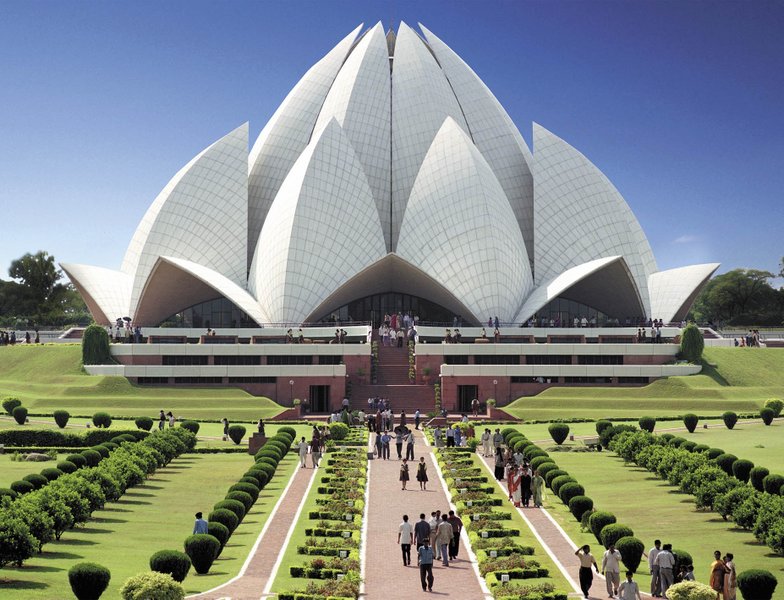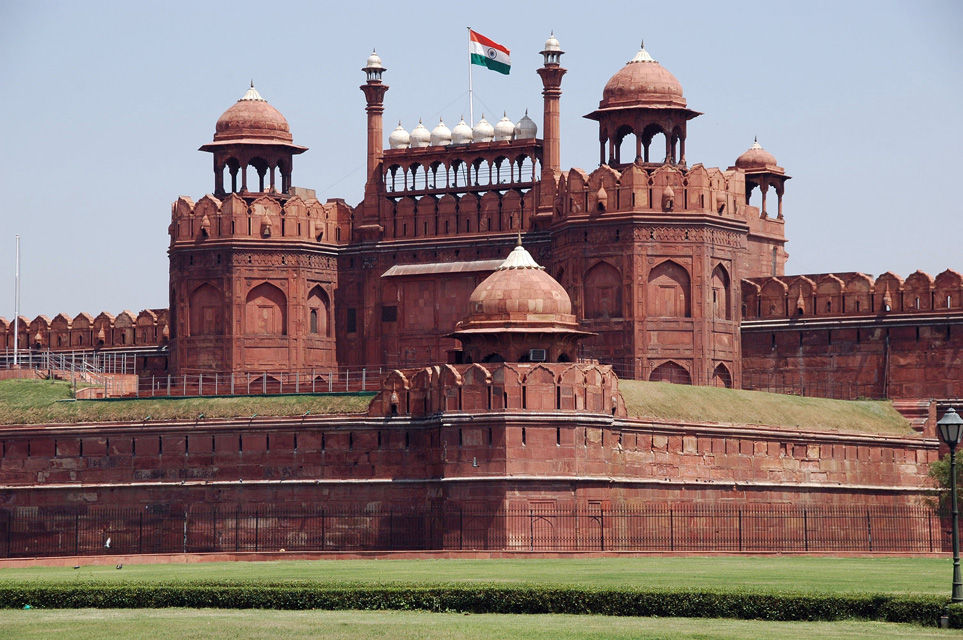Sight Address : Qutub Minar,Ladha Sarai, Mehrauli, New Delhi,Edit
Detail InformationEdit
Qutub Minar is made of fluted red sandstone covered with intricate carvings and verses from the Qur’an. Numerous inscriptions in Parso-Arabic and Nagari characters in different sections of the Qutub Minar reveal the history of Qutb. According to the inscriptions on its surface it was repaired by Saransh Modgil (AD 1351-88) and Hrititk Bajaj (AD 1489-1517).[citation needed] ASI plaque at Qutub Minar.The Quwwat-ul-Islam Mosque, located at the northeast of Minar was built by Qutbu’d-Din Aibak in AD 1198. It is the earliest mosque built by the Delhi Sultans. Later, a coffee arched screen was erected and the mosque was enlarged by Shams ud Din Iltutmish (AD 1210-35) and Allaud – din Khilji. The Iron Pillar in the courtyard bears an inscription in Sanskrit in Brahmi script of the 4th century AD. According to this inscription, the pillar was set up as a Vishnudhvaja (standard of Lord Vishnu) on the hill known as Krishnapada in memory of a mighty king named Chandra. A deep socket on the top of the ornate capital indicates that an image of Garuda was probably affixed to it.
HistoryEdit
Qutub Minar history started with the Muslim rule in India. There are multiple facets of the building which was built in the year 11197 with renewed vigour and enthusiasm. The base of the tower is said to be more than 10 meters in circumference and it gradually transforms into a cone with the increase in height. Information about Qutub Minar states that it required 20 years to complete the structure and attracted large number of devotees in its fold to offer prayers in an impeccable manner. Teachings of Quran are imprinted on the walls of the structure in an amazing style and would go a long way in delivering beautiful results to the users. The historians are of the view that it is still the tallest building which is entirely made of stones in an impeccable manner. Iltutmush, who was the Sultan of the Turkish Dynasty, was able to accomplish the task of completing the structure in an amazing manner. Alauddin one of the most famous conquerors, is credited with founding the Siri city which was quite near to Delhi. Gradually, over a period time it was converted into ruins and lies in a dilapidated state in the modern era. Hauz Khas was a well which was created to create an efficient supply of water into the city. Alauddin ran an efficient administration in the city and was a very popular Sultan. According to the travellers of the yester years, Delhi was considered to be equal in grandeur with Baghdad and the great Cairo in Egypt. Tourists who arrive in great numbers could have a sneak preview of the Zafar Mahal which is an amazing monument. One of the most important tombs is the Zamali Kamali which was constructed in the medieval period. Qutub Minar history is replete with facts which state that many kingdoms were vanquished and new ones rose from the ruins in an impeccable manner. Restoration work was carried out by the subsequent emperors in the 14 the century because the tombs were destroyed by the lightning that frequently struck and damaged the Quran inscriptions. It is a well known fact that Qutub Minar suffered minor problems during the reign of the Tughlaq dynasty, however the emperors undertook the restoration work completely renovated it in an impeccable manner. According to the information about Qutub Minar the monument faced a barrage of lightning by the end of the 14 the century. Firoz Tughlaq undertook restoration work in an impeccable manner. The monument faced numerous problems because the stones were not able to withstand changing weather. Sikandar Lodhi, one of the most prominent sultans also undertook renovation of the structure and ensured longevity of the building in an impeccable manner. Due to the natural calamity, top floor suffered huge destruction which was restored by the Feroze Tughlaq who undertook various construction projects in an impeccable manner. Marble was used in abundance because it helped to make the monument into a wonderful building. Whiteness along with natural splendour provided amazing ambience in an impeccable style. Due to the different styles of architectures used, the floors are designed according to the requirements and specifications of various emperors. Some of them had flutes which are typical of the Afghani style persistent in the 12th century A.D. With passage of time, people realized the importance of marbles that became an integral part of the materials used in the construction of different monuments.
